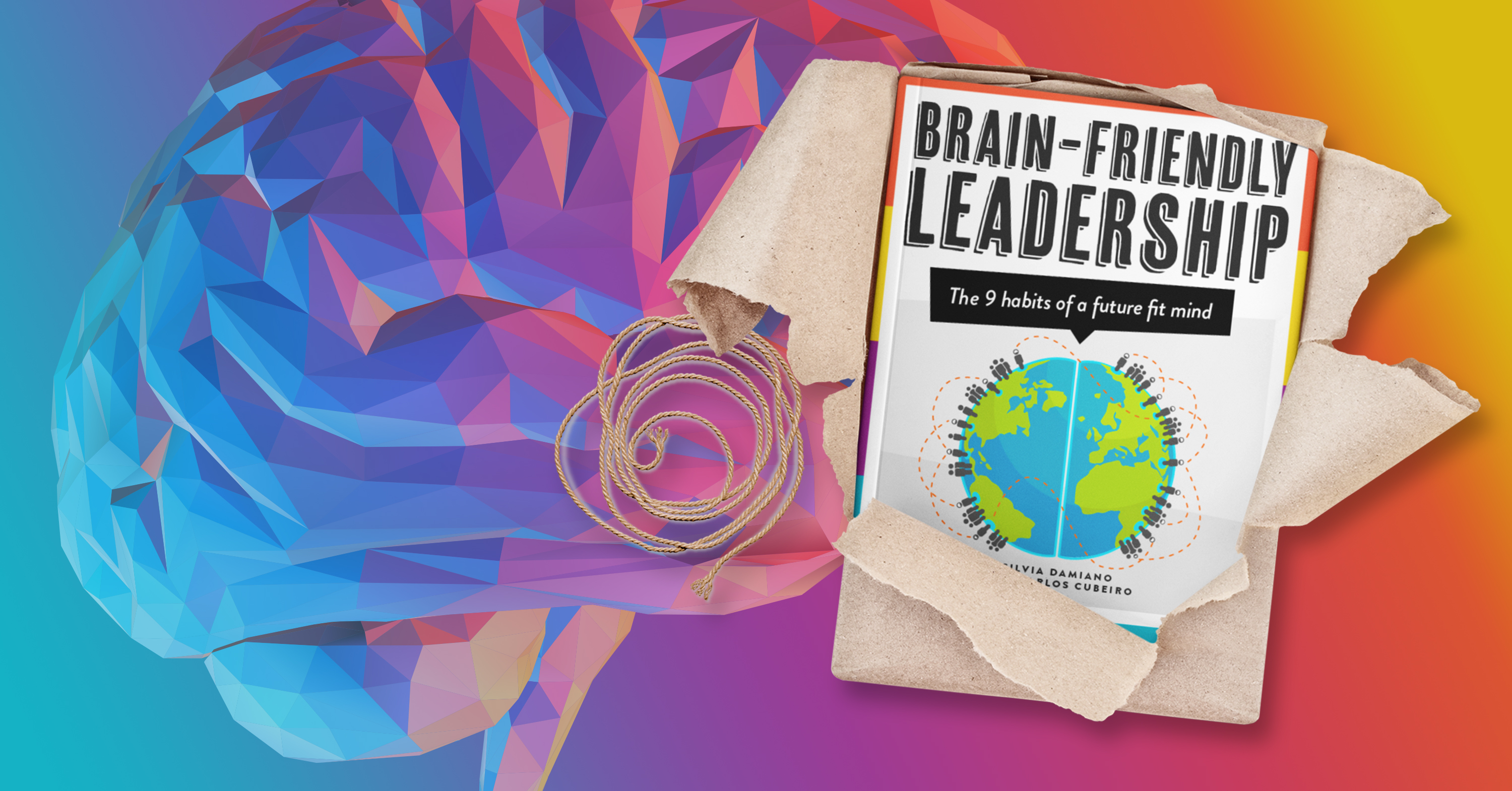Flying High With Neuroscience
The i4 – iFLY Leadership Experience is a unique personal development program that is fun, practical and full of helpful insights, writes Craig Donaldson from Inside HR.
Over the better part of the past decade, there have been a significant number of developments in the field of neuroleadership – a fast-emerging field of study connecting neuroscientific knowledge with the theory and practice of leadership development, management training, consulting and coaching.
Neuroleadership is all about helping individuals and organisations function at their best and fulfil their potential through understanding how our brains function.
In today’s world of volatility, uncertainty, complexity and ambiguity (VUCA), it is more challenging than ever before to perform at our best and be productive in the pursuit of setting goals, delineating processes and having to deal with tonnes of information.
Being in over our heads most of the time, jumping from one task to another, sitting down at our computers when we feel exhausted and being “busy” makes us sluggish, isolated and rigid – in other words, unproductive.
With this in mind, leadership expert  has developed a unique half-day personal development program which combines the latest developments in leadership and the brain, with the thrill of indoor skydiving.
has developed a unique half-day personal development program which combines the latest developments in leadership and the brain, with the thrill of indoor skydiving.
Damiano, who serves as CEO of About my Brain Institute and adjunct director of Neuro-Learning Programs at MGSM Executive Education, developed the program based on the  – a personal leadership model with the brain at its core, made up of four key competencies (integration, inspiration, imagination and intuition) and 16 underpinning pillars.
– a personal leadership model with the brain at its core, made up of four key competencies (integration, inspiration, imagination and intuition) and 16 underpinning pillars.
The i4 – iFLY Leadership Experience program comprises four elements: a two-hour masterclass on neuroscience and leadership in which participants learn about themselves, the brain and how to optimise it; a 360 degree i4 Neuroleader assessment where participants self-rate then gather feedback from colleagues; a one-hour Skype coaching session; and the iFLY experience (probably the most fun element), made possible thanks to the program venue being the iFLY indoor skydiving complex in Sydney.
See the program in Action
Damiano’s style throughout the program is naturally engaging and interactive, and she focuses on building rapport with participants to help them understand how the i4 Neuroleader model can be applied to help them improve personal and professional effectiveness.
With a good balance between leadership and facilitation, Damiano helps participants identify strengths and limitations and chart a map of action, and teaches practical strategies to improve personal leadership capabilities.
The iFLY experience is a great way to top off the half-day program, flying inside an air tunnel with the wind blowing at more than 160 kilometres per hour. After a short training session and donning orange and blue flight suits, flight goggles and helmets, participants are accompanied by an experienced instructor as they take turns flying in the tunnel.
This helps participants notice the importance of getting their brains into “flow” mode in becoming more relaxed, less self-conscious and truly enjoying the moment.
“Being busy” is not the best way to become a high flyer. Rather, understanding how our brains work in practice and applying these insights will deliver enhanced productivity, and the i4 – iFLY Leadership Experience program is a great start to this process.
Box: 8 steps to re-learning how to be productive
Silvia Damiano, CEO of About my Brain Institute and leader of the i4 – iFLY Leadership Experience, outlines eight steps to improving personal productivity:
- Take time to “do nothing”, even if it is 10 to 15 minutes a day. Doing this reboots and refreshes the brain. Research shows that when our minds wander (or daydream), we are 40 per cent more likely to find solutions and come up with creative ideas.
- Re-frame what you say to yourself, for example: “Isn’t it great to be busy rather than not having anything to do?” See it as a blessing rather than an issue.
- Devote yourself to learning how to do the basics right. If you are a slow reader, attend a speed reading course. If you have difficulty writing in an effective way, do a writing course. Learning the basics can free our time for more important things.
- Set short-term goals and spend time planning how to achieve them. When goals are too big or too difficult to reach and there are no clear strategies on how to achieve them, our brains can potentially freeze and we become anxious and scattered.
- Get up from your desk and spend face-to-face time with others. A chat can be more effective to sort out issues or discuss ideas than an email exchange.
- If you feel tense, take a short break, go for a walk and breathe deeply. Oxygen is necessary for the thinking part of the brain to be fully functional. When our emotions take over and we are frustrated or angry, the quality of our decisions and problem-solving abilities are affected.
- Sedentarism (spending most of the time sitting down) also affects us significantly. Stand up, move your neck, shoulders and legs. Have short meetings in the corridors rather than long meetings around a table. If you work from home, you can try walking slowly on a treadmill while you work at the computer. New specially designed desks are starting to emerge in the market making us aware of the importance of alternating positions when we work.
- Invest time in building relationships. Trust is essential to get along with others and to feel confident enough to ask for feedback so you can improve your own sense of productivity.
To learn more about this program send us an email!
- i4 Neuroleader (353)
- Leadership & Culture (325)
- Brain Health & Wellbeing (202)
- Innovation (97)
- Performance (85)
- Our News (80)
- Collaboration (68)
- Agility (53)
- Practitioner Stories (44)
- In The Press (36)
- Make Me A Leader (33)
- Balance (31)
- Integration (30)
- Imagination (29)
- Awareness (23)
- Brain-Friendly Channel (22)
- Communication (22)
- Curiosity (21)
- Inspiration (19)
- Intuition (19)
- Attitude (17)
- Courage (16)
- Adaptability (14)
- Case Studies (14)
- Drive (14)
- Generosity (13)
- Brain-Friendly Leadership (11)
- Ethics (9)
- Mental Readiness (9)
- Influence (8)
- Retreat (6)
- Brain-Friendly Leadership (1)
- Oracle Cards (1)
- 1 April 2025 (1)
- 1 March 2025 (9)
- 1 February 2025 (3)
- 1 September 2024 (4)
- 1 July 2024 (2)
- 1 June 2024 (6)
- 1 May 2024 (2)
- 1 April 2024 (3)
- 1 March 2024 (1)
- 1 November 2023 (1)
- 1 August 2023 (1)
- 1 July 2023 (2)
- 1 June 2023 (2)
- 1 May 2023 (4)
- 1 April 2023 (2)
- 1 March 2023 (7)
- 1 February 2023 (4)
- 1 January 2023 (1)
- 1 September 2022 (1)
- 1 May 2022 (3)
- 1 April 2022 (1)
- 1 March 2022 (5)
- 1 February 2022 (4)
- 1 January 2022 (4)
- 1 December 2021 (2)
- 1 November 2021 (4)
- 1 October 2021 (3)
- 1 September 2021 (6)
- 1 August 2021 (1)
- 1 April 2021 (1)
- 1 December 2020 (2)
- 1 November 2020 (1)
- 1 September 2020 (1)
- 1 August 2020 (1)
- 1 July 2020 (3)
- 1 June 2020 (4)
- 1 May 2020 (3)
- 1 April 2020 (4)
- 1 March 2020 (6)
- 1 February 2020 (4)
- 1 January 2020 (2)
- 1 December 2019 (3)
- 1 November 2019 (3)
- 1 October 2019 (5)
- 1 September 2019 (4)
- 1 August 2019 (4)
- 1 July 2019 (4)
- 1 June 2019 (5)
- 1 May 2019 (9)
- 1 April 2019 (9)
- 1 March 2019 (8)
- 1 February 2019 (7)
- 1 January 2019 (8)
- 1 December 2018 (5)
- 1 November 2018 (10)
- 1 October 2018 (16)
- 1 September 2018 (9)
- 1 August 2018 (10)
- 1 July 2018 (9)
- 1 June 2018 (8)
- 1 May 2018 (9)
- 1 April 2018 (9)
- 1 March 2018 (9)
- 1 February 2018 (8)
- 1 January 2018 (8)
- 1 December 2017 (6)
- 1 November 2017 (9)
- 1 October 2017 (9)
- 1 September 2017 (8)
- 1 August 2017 (10)
- 1 July 2017 (8)
- 1 June 2017 (8)
- 1 May 2017 (9)
- 1 April 2017 (8)
- 1 March 2017 (6)
- 1 January 2017 (3)
- 1 December 2016 (4)
- 1 November 2016 (5)
- 1 October 2016 (4)
- 1 September 2016 (2)
- 1 August 2016 (4)
- 1 July 2016 (4)
- 1 June 2016 (2)
- 1 May 2016 (3)
- 1 April 2016 (3)
- 1 March 2016 (7)
- 1 February 2016 (2)
- 1 January 2016 (5)
- 1 December 2015 (2)
- 1 November 2015 (2)
- 1 October 2015 (4)
- 1 September 2015 (2)
- 1 August 2015 (2)
- 1 July 2015 (1)
- 1 June 2015 (3)
- 1 May 2015 (4)
- 1 April 2015 (5)
- 1 March 2015 (3)
- 1 February 2015 (3)
- 1 January 2015 (3)
- 1 December 2014 (3)
- 1 November 2014 (3)
- 1 October 2014 (3)
- 1 September 2014 (5)
- 1 August 2014 (4)
- 1 July 2014 (5)
- 1 June 2014 (3)
- 1 May 2014 (1)
- 1 March 2014 (1)
- 1 December 2013 (2)
- 1 November 2013 (1)
- 1 July 2013 (1)
- 1 June 2013 (1)
- 1 May 2013 (3)
- 1 April 2013 (1)
- 1 March 2013 (2)
- 1 February 2013 (1)
- 1 January 2013 (2)
- 1 November 2012 (1)
- 1 October 2012 (1)
- 1 September 2012 (1)
- 1 August 2012 (2)
- 1 July 2012 (1)
- 1 June 2012 (1)
- 1 May 2012 (2)
- 1 April 2012 (1)
- 1 February 2012 (1)
- 1 January 2012 (1)
- 1 November 2011 (1)
- 1 October 2011 (3)
- 1 September 2011 (2)
- 1 July 2011 (1)
- 1 June 2011 (1)
- 1 May 2011 (1)
- 1 April 2011 (1)
- 1 March 2011 (1)
- 1 February 2011 (2)
- 1 January 2011 (4)
- 1 December 2010 (4)
- 1 November 2010 (3)
- 1 October 2010 (5)
- 1 September 2010 (4)
- 1 August 2010 (4)
- 1 July 2010 (3)
- 1 June 2010 (4)
- 1 May 2010 (7)
- 1 April 2010 (5)
Subscribe by email
You May Also Like
These Related Stories

What is Brain-Friendly Leadership?

Nurture Yourself & Sleep Will Nurture You




No Comments Yet
Let us know what you think